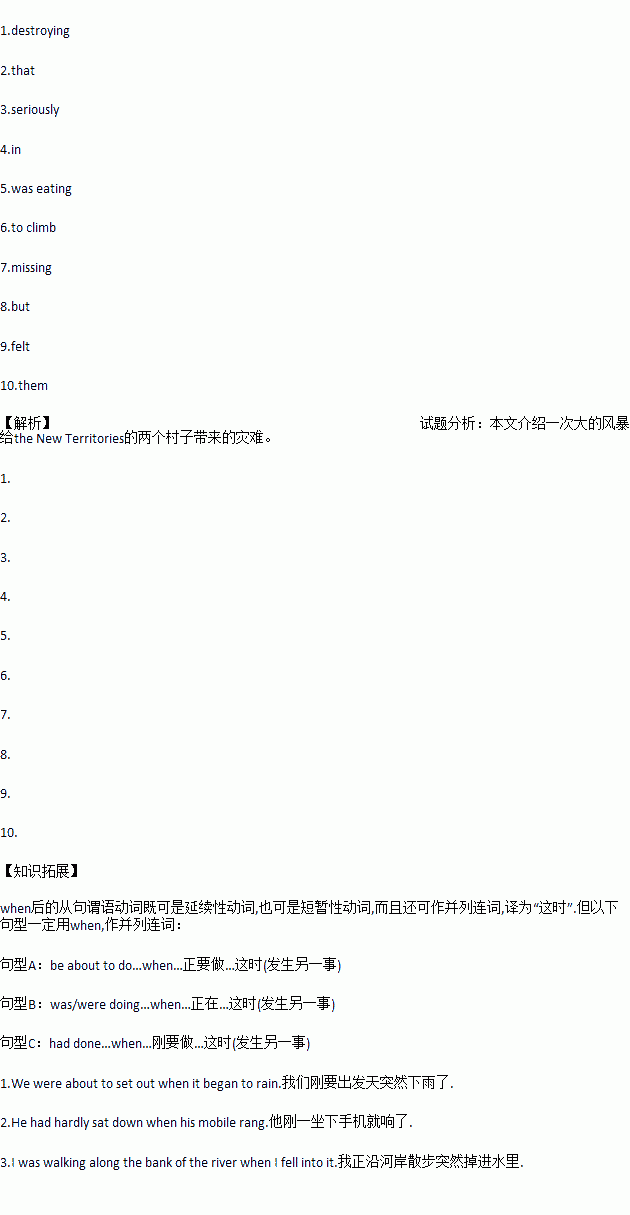题目内容
Last Friday a storm swept through two villages in the New Territories, 1.(destroy) fourteen homes. Seven others were so badly damaged 2. their owners had to leave them, and fifteen others had broken windows or broken roofs. One person was killed, several were 3.(serious) hurt and taken to hospital, and a number of other people received smaller hurt. Altogether over two hundred people were homeless after the storm.
A farmer, Mr. Tan, said that the storm began early 4. the morning and lasted for over an hour.
“I 5.(eat) with my wife and children,” he said, “when we heard a loud noise. A few minutes later our house fell down on top of us. We tried our best 6.(climb) out but then I saw that one of my children was 7.(miss). I went back inside and found him, safe 8. very frightened.”
Mrs. Woo Mei Fong said that her husband had just left for work when she 9.(feel)that her house was moving. She ran outside at once with her children.
“There was no time to take anything,” she said, “A few minutes later, the roof came down.”
Soldiers helped to take people out of the flooded area and the welfare department brought 10.(they)food, clothes and shelter.


 the young people in your group! Don’t miss it!
the young people in your group! Don’t miss it!